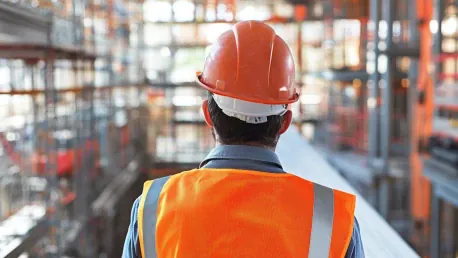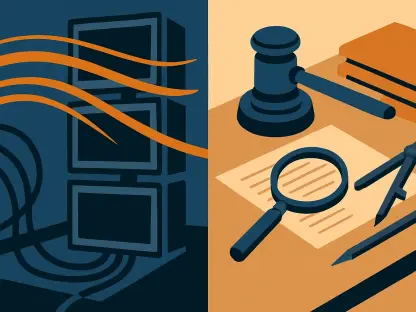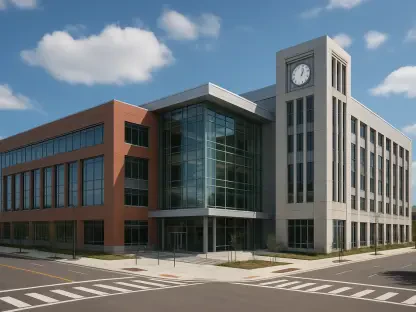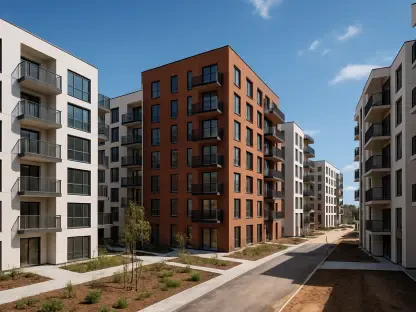Construction defects pose significant safety risks and financial burdens on property owners, necessitating a detailed examination of accountability in the construction process. When addressing these defects, the determination of liability is often complex, involving multiple parties across various stages from initial design to final construction. The problem is further complicated by the rising rate of builder insolvencies, which impact both large-scale developments and individual homeowners, creating a challenging environment where financial burdens can cascade, affecting subcontractors and property owners alike.
The Complexity of Construction Defects
Construction defects are defined as any flaw or deviation from the intended condition of a material, assembly, or component. These defects can range from minor cosmetic issues that are more of a nuisance than a threat to major concerns like structural flaws, waterproofing problems, or flammable cladding. While minor defects may be anticipated in any building and are often manageable, major defects can lead to severe financial repercussions. A notable example is the Mascot Towers incident, which highlighted severe structural issues that posed a significant risk to occupants and led to substantial evacuations due to concerns over a potential collapse.
The Mascot Towers case brought to the forefront critical discussions about building standards and the rights of property owners. This incident underscored the importance of robust accountability measures for ensuring the safety and integrity of buildings. It spurred extensive debates on necessary regulatory changes and the effectiveness of current building standards, showcasing the need for stringent checks and balances throughout the construction process.
Legislative Framework and Recent Changes
In response to these widespread issues, Australian legislation has evolved to enhance accountability and better protect property owners from the fallout of construction defects. One of the cornerstone pieces of legislation is the NSW Home Building Act 1989, which includes statutory warranties in all building contracts. These warranties hold both the builder and the developer responsible for addressing defects that arise during the warranty period, providing property owners with a layer of security and ensuring that necessary repairs are carried out without undue financial burden.
Recent legislative amendments have further strengthened these protections. The Building Legislation Amendment Bill 2023, for example, has granted the Building Commissioner NSW inspectors more authority to investigate and rectify defective building work effectively. This includes the power to issue rectification orders and stop-work orders, giving inspectors the ability to prevent further harm or financial loss to property owners by halting construction until defects are addressed. Such measures are crucial for maintaining high building standards and safeguarding the interests of occupants and stakeholders.
Financial Protections for Property Owners
One of the most significant legislative measures introduced to protect property owners is the Strata Building Bond and Inspection Scheme under the Strata Schemes Management Act 2015. This scheme requires developers to lodge a bond with NSW Fair Trading, equivalent to 2% of the total cost of the building work. This bond acts as a financial safety net, ensuring that there are funds available to rectify defects in new buildings that are four stories or higher. The bond provides a crucial financial buffer to address defects that might be uncovered post-construction, thereby protecting property owners from unforeseen financial burdens.
Additionally, the Design and Building Practitioners Act 2020 has introduced a duty of care for all parties involved in the construction process. This legislative change aims to prevent economic losses that arise from defects, ensuring that those who delegate or subcontract work are still held liable for any defects that emerge. The law upholds the principle that liability cannot be easily side-stepped, safeguarding property owners’ rights to claim full restitution for economic losses resulting from construction defects. This legislative framework ensures that accountability is clearly defined and enforced, providing property owners with the ability to pursue redress effectively.
Challenges Faced by the Construction Industry
While these legislative changes aim to bolster accountability and improve construction quality, they simultaneously exert significant pressures on the construction sector. The industry is already grappling with a multitude of challenges, such as labor shortages, rising material costs, project delays, and supply chain disruptions. These issues collectively increase project costs and cut into contractors’ profitability, further exacerbating financial instability within the sector.
Builders have been experiencing negative cash flows, a situation that often leads to unpaid suppliers and incomplete projects. The financial pressure may force the responsible party for defective work into insolvency, creating a domino effect where stakeholders are left to bear the financial burden. This insolvency cascade can disrupt the entire construction ecosystem, highlighting the necessity for effective risk management strategies. Builders and contractors must navigate these complexities while maintaining high-quality standards to avoid contributing to the cycle of financial strain and construction defects.
Insurance as a Mitigation Strategy
Insurance emerges as a potent solution to mitigate the risks associated with construction defects and the financial instability of builders. In NSW, there is a trend towards mandatory insurance requirements for builders, including provisions that address builder insolvency. Professional indemnity insurance and decennial liability insurance (DLI) are examples of policies that offer financial security to property owners in the event of defects, even if the builder or developer becomes insolvent.
Decennial liability insurance (DLI), in particular, provides a decade-long coverage for defects, ensuring that rectifications can be made even long after the original parties involved in the construction have ceased operations. This long-term coverage is particularly valuable as it ensures continuous protection for property owners, mitigating the financial impacts of construction defects over an extended period. The presence of such insurance policies fosters a more resilient approach to managing the financial risks associated with construction defects, ensuring that property owners have a safety net in place.
Proactive Measures to Avoid Disputes
While legislative frameworks and insurance policies play crucial roles in managing construction defects, proactive measures are essential to avoid disputes and mitigate risks effectively. One of the most important steps is assembling a reputable and diligent construction team. This involves ensuring that all parties involved, from designers to subcontractors, have a proven track record and a commitment to quality work. Thorough due diligence on all stakeholders can help identify potential risks early in the construction process.
Establishing robust contractual risk transfer mechanisms is another critical measure. Clear and detailed contracts that outline the responsibilities and liabilities of all parties involved can prevent misunderstandings and disputes down the line. Additionally, obtaining appropriate insurance coverage tailored to the specific risks associated with a project is vital. This ensures that any financial liabilities arising from defects are adequately covered, providing a safety net for property owners and developers alike.
Seeking early legal advice when a defect arises is also a prudent step. Early intervention can help address issues before they escalate, enabling property owners to protect their rights and pursue recovery from responsible parties promptly. A proactive approach that combines diligent planning, clear contractual agreements, and awareness of legal safeguards can minimize disruptions and financial losses, helping stakeholders navigate the complex landscape of construction defects more effectively.
Ensuring a Sustainable Future in Construction
Construction defects present significant safety risks and financial challenges for property owners, making it crucial to thoroughly investigate who is responsible in the construction process. Determining liability for these flaws is often complicated, as it involves multiple parties throughout various stages, from the initial design to the final construction. The situation becomes even more complex due to an increasing number of builder insolvencies, which affect both large-scale developments and individual homeowners. This rising insolvency rate creates a tough environment where financial burdens can cascade downwards, impacting not just property owners but also subcontractors who may face financial instability as a result.
When construction defects arise, pinpointing the responsible party is not always straightforward. It could be the architect, engineer, contractor, or even a subcontractor who failed to meet the required standards. Improper materials, poor workmanship, and even design flaws can all contribute to construction defects. As legal disputes over these issues intensify, the financial and safety implications for property owners grow. This increase in conflicts can lead property owners to bear significant renovation costs, further complicated by the risk of dealing with bankrupt builders who cannot cover their liabilities.









